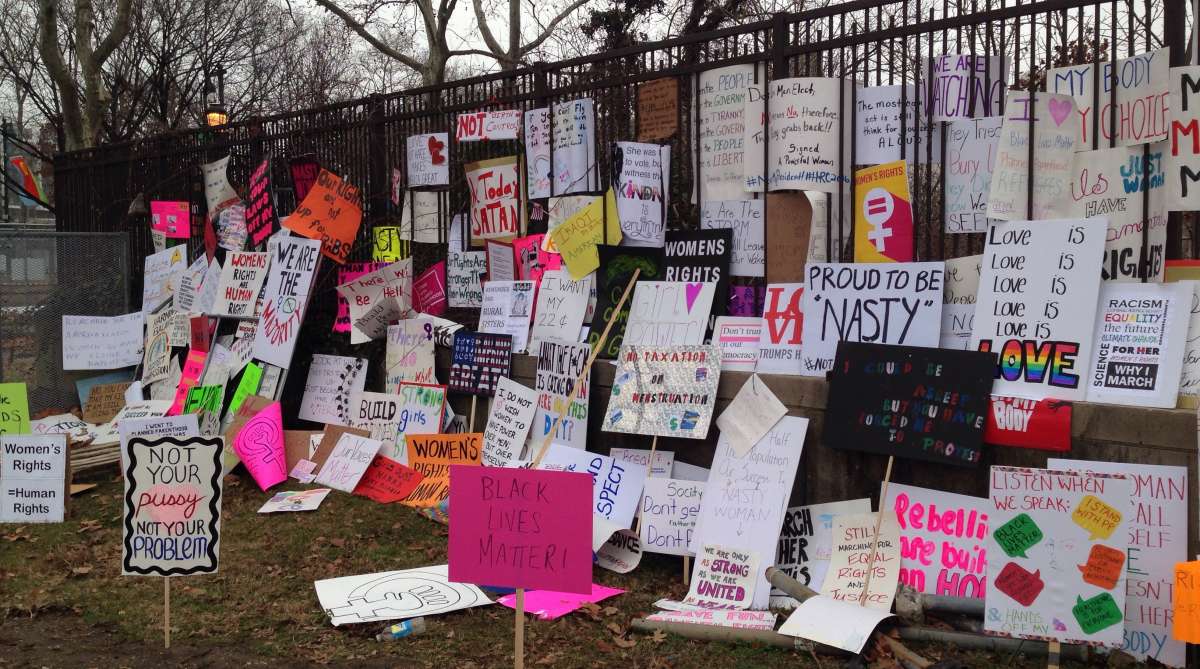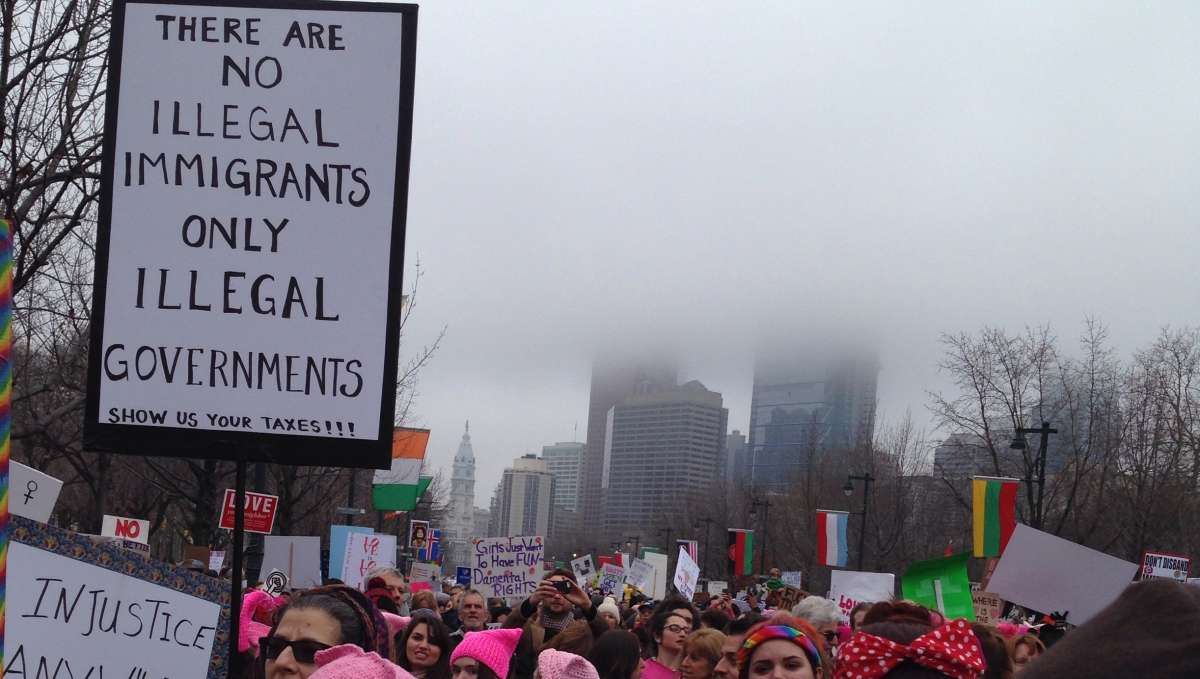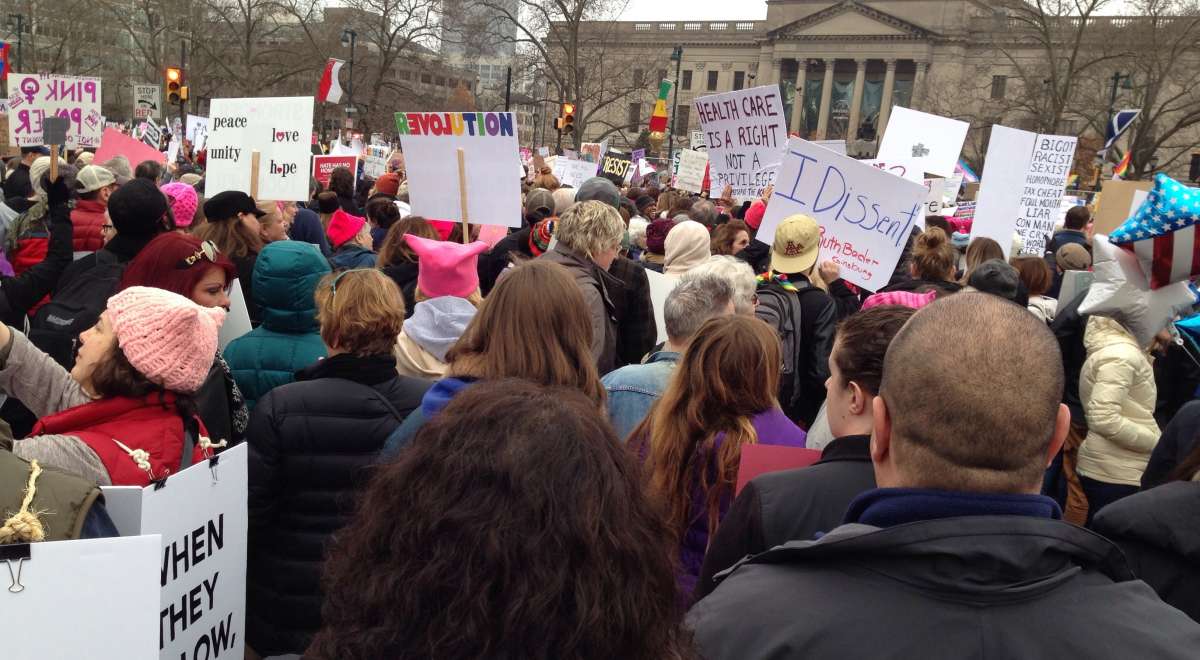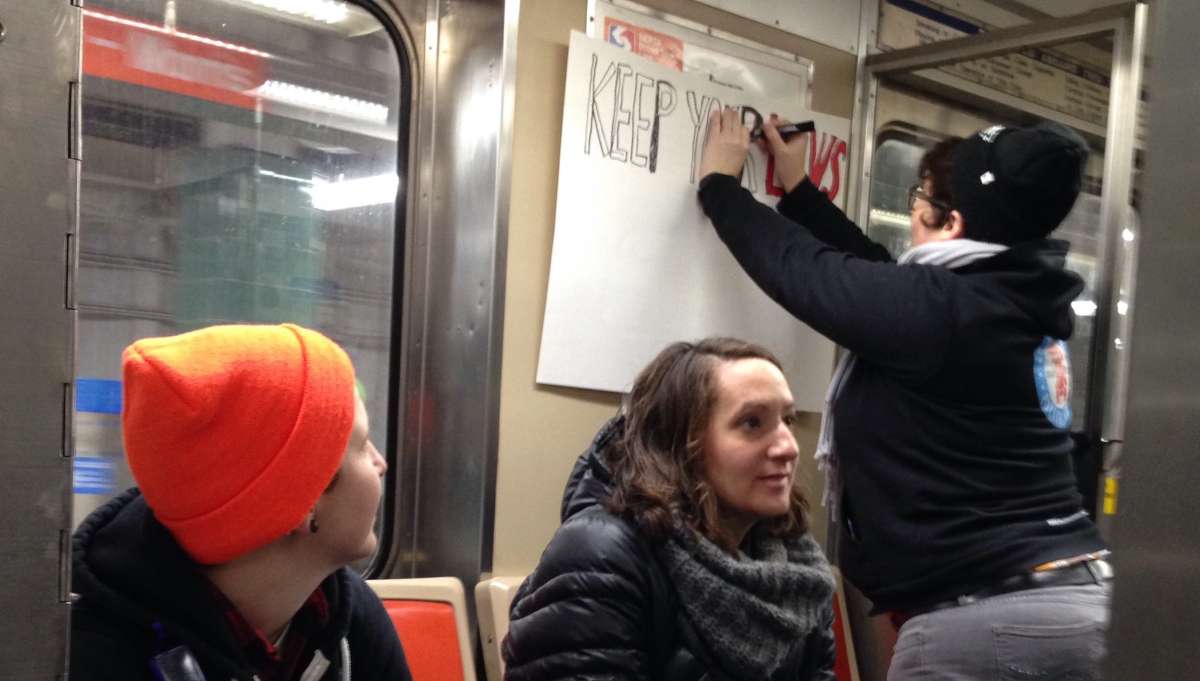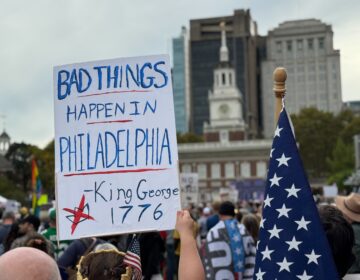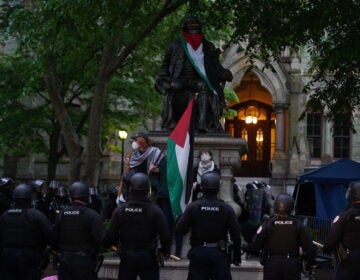Don’t dismiss Saturday’s march as ‘thoughtless excitement’ of ‘angry women’
When you step onto a subway train, there are a lot of things you could smell that are worse than Sharpies, so on Saturday morning, I didn’t mind that a few women had left their sign-making to the last minute.
Against the wall of the subway car, one was coloring in giant block letters that read, “KEEP YOUR PAWS” — and I had a good idea of what the second line was going to be.
In the days before the Women’s March on Philadelphia (and around the world), a lot of my friends were debating what to write on their signs. And it gave me a feeling that’s been gone since I finally slept on a very damp pillow in the early hours of Nov. 9, 2016.
Getting there
On Saturday, a gray and chilly fog hid the tops of Liberty Place and the Comcast Center, and sometimes even William Penn, but the day was mercifully dry and not-freezing. The three women in our house in South Philly did our best not to bump each other with the fridge and cabinet doors while we fixed hearty early breakfasts that would make any mother proud.
I got on the Broad Street Line at Tasker-Morris, and accidentally met three people I know before I even got to City Hall.
I heard from several friends across the city and suburbs that week who wanted to join the march, but weren’t sure when, where, or how. Several women — especially those from the generation who remembers protests in the ’60s and ’70s — shared Facebook posts detailing tips, like writing your name and an emergency contact on your arm with permanent marker, staying hydrated, and keeping near the edge of the crowd.
Nobody knew what to expect.
So we used an ever-converging thread of texts and other messages to marshal a meet-up including friends, colleagues, roommates, a few partners, and the friends they brought along. Our growing tribe made many starts and stops along the teeming Parkway, because someone was always just a block away, hailing with a text.
Large and in charge
I didn’t know how big the march had really grown until a few hours later, when I caught a roar of voices so far away it was hard to hear them, and realized those voices, rising like cheers from a distant sports stadium, were part of the same crowd.
As the day went on, I ran into a client and a cousin and a partner’s roommate. I met an old friend who survived the same Christian school as I did. Triangulating by text with the help of the Parkway’s flags of the world, two men I met through OK Cupid joined in. I also ran into my psychologist.
“This is what democracy looks like!” we shouted by the hundred. “My body, my choice!”
It felt good.
I felt good. We felt good.
For the first time in months.
Just the act of locating each other — either by accident or on purpose — in a crowd now estimated at 50,000 people is pretty damn uplifting.
‘Thoughtless excitement’
But of course, before we could get home and read our friends’ posts and texts about how the marches made them feel, people were asking: What’s next? Will the millions who turned out around the world somehow help American women hold on to rights they gained decades ago — or, in some cases, are still fighting for today — from reproductive rights to quality healthcare to equal pay?
Writing in The Guardian, Occupy Wall Street co-creator Micah White said the urge to march following Trump’s inauguration comes down to a “false theory” of how the people can retain power in 2017.
The only way social protest can affect the functioning of government is when it wins elections or wins wars, he continued. Does the “entirely symbolic” Women’s March qualify?
White wrote that the Women’s March may have a role in affecting policy, but only if we can detach from our “thoughtless excitement” to consider what to do from here.
Looking at texts from men and women who marched with me, I wonder.
“I’m still on a high from yesterday.”
“It was amazing. I didn’t want to ugly cry in public.”
“Yesterday was fun, and fulfilling.”
Is this the “thoughtless excitement” we need to jettison before making real change?
“If you’re showing up at the Women’s March on 21 January in the hopes that the world will be different on 22 January, then you need to think seriously about the goal of marching,” White advised.
Well. As far as I can tell, the world isn’t different. But the way we feel is different. After an election season full of statements to publicly bruise, objectify, and humiliate women, we’ve been hurting for a long time.
White is optimistic about the Women’s March. He hopes those “angry women” will lead to a disciplined sweep of elections in 2018, paving the way for a new president in 2020.
I saw more furious cats on the signs of the Philly march than I’ve ever seen in my life. But throughout the massive and completely peaceful rally (which left cops lounging against barricades and cruisers), anger was the underpinning of something else. Call it camaraderie. Solidarity. Friendship. Festivity. Hope.
A lot of people are saying Quiet down now. They’re saying Make a plan. Let’s also say we feel good again. We don’t feel alone anymore. And consider that that is not how, but why we can tackle what’s next.
WHYY is your source for fact-based, in-depth journalism and information. As a nonprofit organization, we rely on financial support from readers like you. Please give today.


